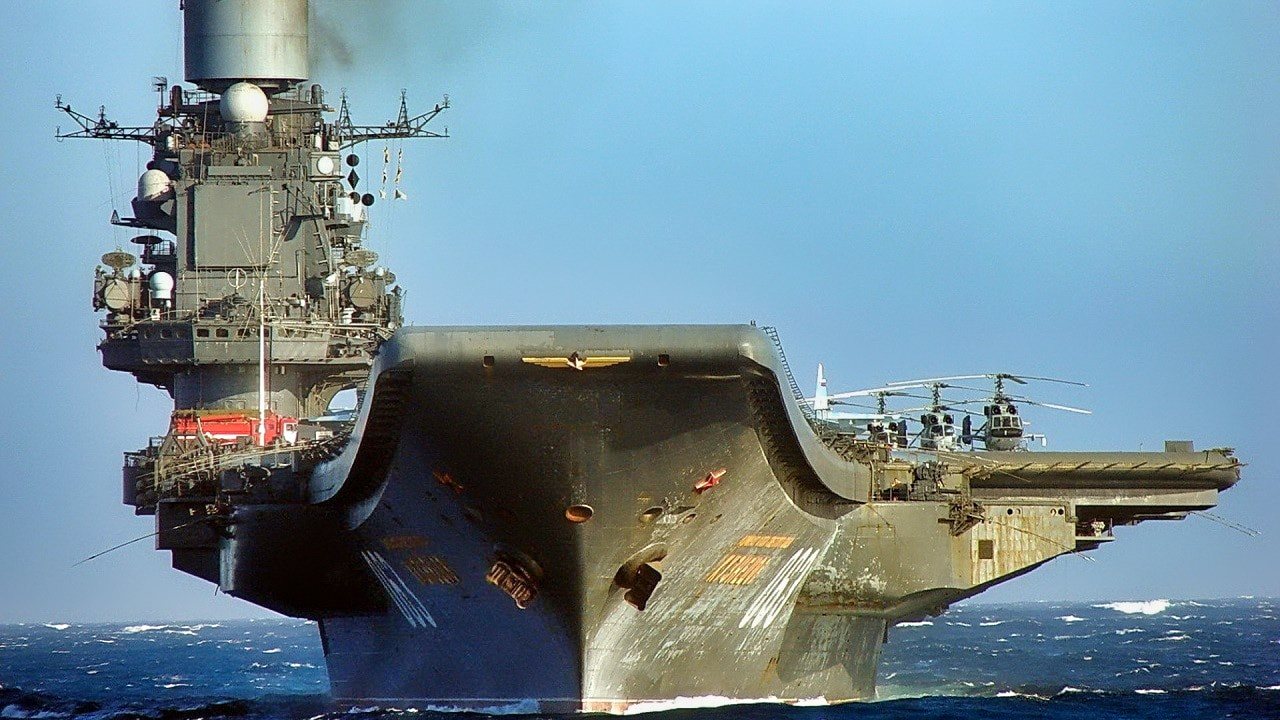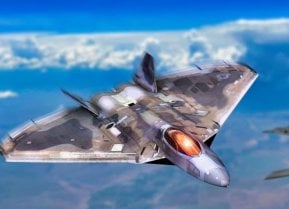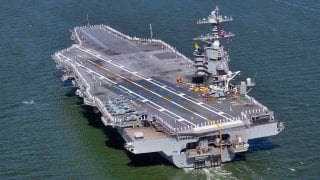Are You A History Buff? Meet the 5 Worst Aircraft Carriers Ever to Sail
Building an aircraft carrier is difficult business. Many of the world’s great navies started by converting other ships into carriers, a practice that resulted in a few successes, and more than a few failures. Other navies worked their way up by experimentation. With China recently launching its first domestically built carrier, and Japan considering the conversion of its Izumos into fleet carriers, it’s worth considering some of the more egregious failures in world aircraft carrier construction.
Building an aircraft carrier is difficult business. Many of the world’s great navies started by converting other ships into carriers, a practice that resulted in a few successes, and more than a few failures. Other navies worked their way up by experimentation. With China recently launching its first domestically built carrier, and Japan considering the conversion of its Izumos into fleet carriers, it’s worth considering some of the more egregious failures in world aircraft carrier construction.
Transparency Statement: This first appeared years ago and is being reposted due to reader interest.
HMS Eagle
HMS Eagle, originally Almirante Cochrane, was designed as a battleship. Intended to fill out a battle squadron in the Chilean Navy, work on Almirante Cochrane ceased at the beginning of World War I. After the war, the Chileans no longer wanted the battleship, leaving a large hulk without much to go for it. The Royal Navy had already experimented with several conversions, and decided to use the battleship hull to construct another aircraft carrier.
The results were not particularly satisfactory. On a displacement of 23,000 tons, Eagle could make twenty-four knots and carry twenty-five aircraft. These specs left her uncompetitive with Japanese and American aircraft carriers, and even with the other conversions in the Royal Navy; the three Courageous-class carriers were faster and could carry more planes. Commissioned in 1924, she was updated during the interwar period, but not extensively reconstructed.
Despite her drawbacks, HMS Eagle saw a great deal of service in the early years of World War II. She patrolled the Indian Ocean, and later participated in the Mediterranean campaign, where her slow speed was less of a drawback. But on August 11, 1942, she was hit by four torpedoes from U-73 while covering a resupply convoy to Malta. She sank in four minutes.
Bearn
France’s first effort at an aircraft carrier didn’t go well. Converted in 1927 from an incomplete Normandie-class battleship, Bearn was quite large, displacing 28,000 tons full load. However, she could only reach about twenty-one knots, making it difficult to integrate her into the fleet. Bearn was equipped to carry about forty aircraft, although the slow development of French naval aviation meant that the planes were generally not competitive with foreign counterparts.
The French navy expected to use Bearn in an experimental role, in anticipation of the construction of purpose-built carriers. However, austerity delayed the construction of those ships, and at the onset of war Bearn remained France’s only aircraft carrier. She operated with a task forces that hunted German raiders, but never launched a combat sortie. In May 1940, she carried France’s gold bullion to North America. On the return trip she was supposed to bring a load of combat aircraft, but France surrendered before Bearn arrived. She put in at Martinique, where she remained for much of the war.
Bearn was turned over to the Free French in 1943. The United States saw little urgency in returning the big, slow carrier to service, but eventually got around to refitting Bearn in 1944. She served out the last days of World War II as an aircraft transport, a role she continued in the early stages of the Indochina Wars. She was scrapped in 1967, having never launched a sortie in anger.
HIJMS Kaga
Japan fully understood the limitations of battleship conversions, and had initially intended to convert the battlecruisers Akagi and Amagi, which were long and had high top speeds. Unfortunately, the Great Kanto earthquake badly damaged Amagi, forcing the Japanese to spare the incomplete battleship Kaga as a substitute. As originally constructed in 1928, Kaga was not suitable; she had three flight decks, weird funnel arrangements and a variety of other small problems. A reconstruction in the mid-1930s rectified some of these issues, but left Kaga with potentially serious damage control vulnerabilities, and a speed shy of the rest of the 1st Air Fleet (Kido Butai). In her final configuration, she displaced a massive 38,000 tons, but could make twenty-eight knots, and carry seventy-two aircraft.
Kaga was nevertheless an active participant in the Sino-Japanese War, and in the first six months of the Pacific War. She missed the Indian Ocean raid after suffering damage from an uncharted reef. She was back in service for the Battle of Midway, however. On June 4, 1942 four bombs dropped by U.S. Dauntless dive bombers struck Kaga. The limitations of her damage-control system soon became apparent, and fires engulfed the ship. Nine hours later, Kaga was scuttled by torpedoes from accompanying destroyers.
USS Ranger
USS Ranger was the first purpose-built U.S. aircraft carrier, and the fourth carrier to join the U.S. Navy (USN). After devoting an immense percentage of its treaty tonnage to the battlecruiser conversions USS Lexington and USS Saratoga, the USN hoped that it could create a formidable unit on a much smaller hull. As commissioned in 1934, Ranger displaced 14,000 tons, could make twenty-nine knots, and could operate seventy-six aircraft (although in practice fewer were carried).
Although capable of carrying a large number of aircraft, Ranger was lightly constructed. Problems with storage space meant that Ranger would carry no torpedo bombers, limiting her effectiveness in anti-ship roles. Poor sea keeping meant that she couldn’t launch aircraft in even a moderate sea. Cramped space limited the speed with which she could launch aircraft, a deficiency that could have proven fatal in carrier battles against the Imperial Japanese Navy. Experience with Ranger effectively killed the idea of small, purpose-built carriers to be used for fleet purposes, although the later Independence-class conversions would accomplish much on roughly the same size hull.
Accordingly, the USN kept Ranger as far away from the Japanese as possible. She served with honor in the Atlantic, however, supporting Operation Torch and undertaking strikes against German positions in Norway. Even as the naval war in Europe wound down, U.S. commanders did not strongly consider subjecting Ranger to the rigors of the Pacific. She could not keep up with the latest USN carrier battle groups, and her light construction would have made her extremely vulnerable to kamikaze attacks. By 1944 she was relegated to training duties, despite the availability of a large number of escort carriers for such service. Placed in reserve after the war, she was scrapped in 1947.
Kuznetsov
Originally designed and built by the Soviet Union, Admiral Kuznetsov (as she was eventually called) was intended as a part of an evolutionary step to a modern fleet carrier. Her predecessors (the Kiev class) could only operate VSTOL (vertical and/or short take-off and landing) aircraft, but Kuznetsov possesses a ski-jump which enables her to launch conventional fighters. Intended primarily as a defensive carrier, Kuzentsov was supposed to give Soviet shipbuilders experience with modern carriers, while serving as a test-bed for the development of a conventional naval aviation wing.

The collapse of the Soviet Union also meant the collapse of funding for the carrier project. Laid down in 1983, she was not finally commissioned until 1995. Displacing 58,000 tons, she can theoretically make twenty-nine knots, and carry about forty aircraft. In 1996 she suffered a major breakdown, and was in repairs until 1998. Assigned to the Northern Fleet, she has periodically deployed to the Mediterranean, usually with great fanfare. In November 2016 she conducted her first active military operations, launching strikes against Syrian rebels. During the operation she lost two aircraft (one MiG-29K, and one Su-33) to accidents.
Whether because of poor construction or shoddy maintenance, Kuznetsov has struggled to remain in service, and has yet to make a meaningful military contribution to Russia’s security. Bringing her up to the standards of her half-sisters Liaoning and CVA-001 would likely require more investment than Russia is currently prepared to make to its carrier fleet.
Conclusion
Many of the carriers here were early efforts, although even these compared unfavorably to their competitors. Some (Kaga, Eagle) were sunk; others (Ranger, Bearn) were kept away from the main areas of fighting because of their obvious deficiencies. The navies that operated these ships, in most cases, learned a great deal and made an effort not to repeat the mistakes of their construction. The exception to this is the case of Admiral Kuzetsov, which remains in a kind of service, but has yet to produce offspring (in the Russian navy, at least).
Robert Farley, a frequent contributor to TNI, is author of The Battleship Book. He serves as a Senior Lecturer at the Patterson School of Diplomacy and International Commerce at the University of Kentucky. His work includes military doctrine, national security, and maritime affairs. He blogs at Lawyers, Guns and Money and Information Dissemination and The Diplomat.


